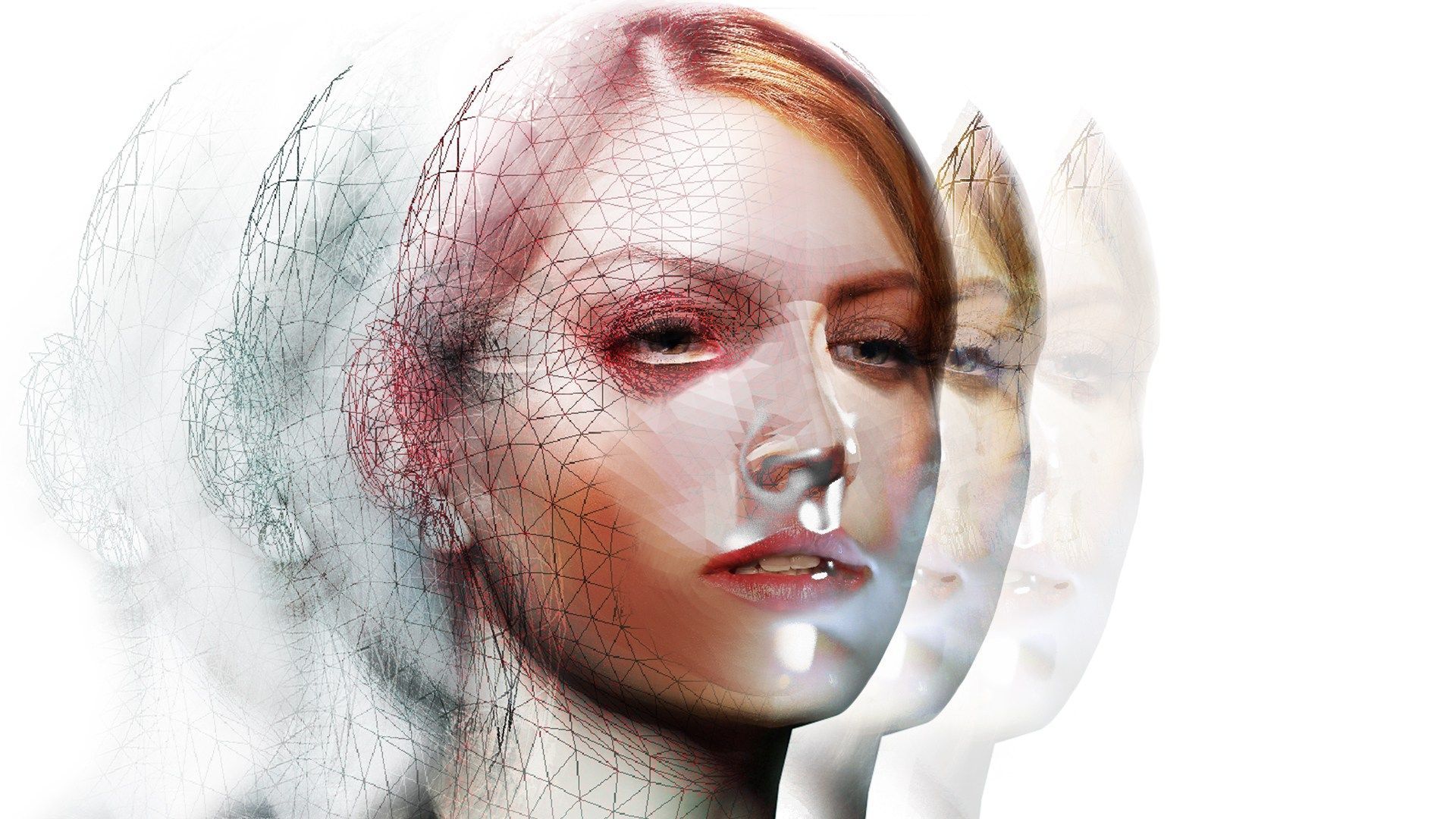How Web Meetings Changed My Work
Sep 25/20
What I do is not visual. I voice telephone prompts, and they are an auditory experience.
Since I started voicing IVR full time (23+ years ago), the extent of my contact with other humans on a day-to-day basis has been relegated to e-mail, phone calls, and physically face-to-face at conferences (which could not seem more alien to me right now.)
Then, gradually, I was invited onto other people’s video platforms for meetings. Suddenly, things like good lighting and hair and makeup became paramount.
While on these meetings, there became the need for visual slides to illustrate my points; my recording procedure? My rates? Why, yes, let me *show* you, and not just tell you.
Next: I heard more and more about pitch decks. I didn’t ready know how to put one together, but I have become gradually more and more adept at PowerPoint, and I just put together a short slide show which explains what I do, how I do it, and how what I do can be a great value-add to prospective clients or resellers of phone systems. There was a huge increase for demand to meet by video (even pre-pandemic) and I opened a GoToMeeting account.
The rest, as they say, is history.
I average 3-4 video meetings a week, and they have been a complete boon to my business. The combination of visually showing people my client logos, telling them amusing stories of me encountering automated “me” while dialing into phone systems, and that face-to-face (albeit pixilated) contact is intimate, and personable. I came to the realization that the reason why video meetings are essential – even to someone who works in audio – can be pinpointed this way:
1. Seeing a Face “Humanizes” a Voice Talent. I know many voice talents who have deliberately not put their images on their websites; the thinking is that a visual image can inform whether or not you get cast and restrict opportunities (it’s all in how you sound; not how you look. Many talent who voice small children in anime are middle-aged women.) I’ve always been “visible” – speaking at conferences – that I have always included headshots on the various incarnations of my website. Web meetings go ever farther to “personalize” a voice talent, and enable a genuine connection with your prospective client. During presentations, they are able to see my facial expressions, which go a long way towards establishing and maintaining a bond.
2. We’re Visual. It’s one thing for me to tell someone how to order on my website; it’s another thing to show them where they log in, how to cut and paste their order, and what to do when taken to the payment page. There’s something about *seeing* it mapped out which dispels any idea that’s it’s complicated or even remotely complex to order prompts through my company.
3. So Much of Communication is Non-Verbal. I think I write a pretty good e-mail. Even with that skill, nothing can impart empathy and understanding as well as eye contact, nodding, and smiling. So much inflection is lost over a phone connection. Even through a pixilated face, communication is greatly enhanced when you can *see* the person you’re interacting with.
4. They Like to Hear My Voice! It's the product I market. And yes, my conversational voice is somewhat different than my announcer voice; clients still like to inspect what they're about to buy.
I strongly encourage other voice talent to explore web meetings as a way of launching your product to prospective customers; it gives them a good, solid base from which to build partnerships.

My husband and I were recently on a cruise, and we chatted with another passenger who was ranting about his work force being less than enthusiastic about returning to a physical office after the company decided that the pandemic work-at-home paradigm was affecting productivity and that workers cannot be trusted to self-monitor their productivity. I’ve read a few articles – and I’ve also heard anecdotally – that the opposite is actually true; that with fewer distractions and a comfortable home working environment, workers actually thrive and produce more. Workers who are moms – and who previously would have had to book the day off if their child took sick – can now attend to their child *and* keep working. There are most definitely home-based workers who slack off, and who see that unsupervised environment as a blank check to work at their own pace – which is different than the pace they had while in the physical office. But I think you’ll find even more examples of workers who are actually *more* productive at home, with fewer interruptions from coworkers and better focus and concentration in their home environment. It’s kind of like the kids who were home schooled during COVID: those who were already self-starters and good motivators of their own work ethic did pretty well taking online classes. Those who were not so well equipped raged out of control and gave their parents a whole new respect for teachers. I’ve been self-employed for almost 30 years. I worked fine with other people in the retail environment of my youth, but ever since I built my home studio and started producing sound files and putting myself on the map in the voiceover industry, I came to realize that I work just fine on my own. Nobody could push me harder than I push myself, and I know I have put in longer hours without glancing at the clock than if I had someone standing over me, telling to do so. Make no mistake: home can be rife with distractions. There’s a pantry with tempting snacks. There’s pets and kids. There’s Food Network streaming on a tab on your computer running behind everything else business-related. But the office has its own distractions. Co-workers wanting “just a second of your time”. Endless meetings which derail your workflow. Never-ending interruptions to your focus. If you’re the kind of worker who works well at home, what makes it so? I can tell you why it’s such a good fit for me. 1. I like the feeling of being in control of my day. At the end of one workday, I map out what I’m doing the next day. I plan a lot of “brainpower” tasks for earlier in the day, and I do most of my voicing in the morning when I’m fresher and more alert. More mundane, administrative tasks (invoicing, planning presentations) happens in the afternoon. 2. There’s nothing like the pleasure of not having to commute. I do not envy anyone having to hit the roads (especially in the winter) to get to work, and I’m forever grateful that my commute is from the coffee maker to my office down the hall. I feel grounded, comfortable, and in my element working from my home without a significant amount of time every day being wasted getting to and from the office. 3. Other things also get done. In those times where you need a break – and getting up from your desk is recommended at least once every hour – I love that I can fold laundry, make muffins, walk a dog, or straighten up my house as a way of re-setting my brain. Need to do a library run? Pick up groceries we need for dinner that night? I have the freedom and flexibility to be able to do it as a respite from work and come back refreshed. If you have the freedom to work from home, and you have the ability to work well on your own – without a lot of oversight – I highly recommend it. You might just be one of those workers – like myself and my other voiceover colleagues – who thrive working that way and are very productive in a self-guided work structure. What being self-employed has taught me? I’m a self-starter, I’m independent, and I am ultimately accountable for the success of my business – a takeaway that’s extremely satisfying and rewarding.

You know the feeling. You’re thinking a thought, and you’re convinced that you have it all queued up and ready in your mouth to communicate it, have it fall on other’s ears, and have it make sense. And somewhere along that line of thinking it, prepping it, and sending it out, it gets garbled. An example: at the off-leash park, a dog came over to me and immediately buried its nose in a cross-body pouch that wear that holds the essentials: poop bags, tissues, and of course: dog treats. As the other owner and I were smiling at his dog’s persistence in getting a snack from me, I had planned to say: “They can’t resist the treat pouch! And what I actually said was: “They can’t resist the trout peach!” We both exchanged a look that said: “Well, that was awkward.” I thought I could feign being from a foreign country, but then I gave myself a break. That mental >>> verbal fail, as much as we dislike it, can actually be a symptom of your brain working almost too well. Sometimes the brain just moves faster than your mouth. You’re actually thinking several steps ahead, and that’s causing a disconnect between the brain and the mouth. When has thinking ahead ever been a bad thing? Being tired – or under the influence of alcohol or drugs – can contribute to the issue, but generally, the realization needs to be made: we’re human, and these verbal fails happens all the time to everyone. As a voice talent who has operated my own home-based studio for almost 30 years, I can tell you that re-dos and re-takes are a common event, and very seldom are there projects that get voiced smoothly, accurately, and error-free on your first try. Despite that, when I did voiceover work at public studios when I was just starting out, there was a lot of pressure to do things flawlessly on the first take, finishing the session in record time and arriving back at the parking lot before your car had a chance to cool down. You’ve cost the client less money in studio time, and the engineer can go onto other projects. A colleague of mine, who landed an on-air position with a busy news station, amazes me every morning when I listen to her. She seldom messes up, and when she does, she just keeps it moving. The pressure of doing it live is a huge impetus to strive for perfection. Even in that environment, “perfection” is an elusive and impossible goal. While I admire her on-point delivery, I like living in a world where redo’s are easy, usually (for me) yield a better delivery with every subsequent take, and makes me more inclined to only release my best work. So – about that tongue-tied word salad that occasionally comes out in everyday conversation, despite our best efforts? Here’s some tips to speak in a better, more metered way and reduce the change of that happening. Slow Down Speed being a factor in most accidents, it’s worth reminding yourself that going too fast will increase the possibility of derailment. Slow things down, in order to cause less of a chasm between the brain signal and the mouth translation. Take words deliberately and clearly It’s a phenomenon in professional voiceover where the announcer will just say the words correctly and in the right amount of time – but never actually think about what they’re reading. You can hear it any time you turn on the radio or TV – this robotic delivery of words. This is something we don’t do in conversation – we emphasize the appropriate words, and “push forward” words to advance our ideas. When I coach yoga instructors (and anyone who wants to speak better), I ask them to *really think* about the content they’re speaking and to give the significant words their due weight, as we naturally do. Your words will have less chance of getting garbled if you visualize what you need to say, think about what you’re saying, and give the proper emphasis to significant words. Nobody cares. You know the old saying: “You wouldn’t worry so much about what other people think of you, if you knew how little they did.” That. We’re convinced that everyone else is closely watching – and evaluating – everything we’re doing and saying. The cold hard fact is that everyone else is so wrapped up in their own performance that they really aren’t noticing you. And even if you do goof up and say the wrong thing, the worst thing the person listening is thinking is: “Oh yeah. That happens to me, too.” Like that slip on the ice that will inevitably happen this winter, we’re usually primarily worried if anyone saw us. Even if they did; they’d just be thinking: “Glad it wasn’t me this time.” Slow down, really think about the content of what you’re saying, and give your self a break when things don’t come out of your mouth exactly how you wished they would.

When I’m collaborating with clients about exactly what content should be in their IVR, I notice that many of them have a “shopping list” of things that need to be in their menu. “We have to list all of the extensions in accounting in case someone’s hunting for someone specific.” Or: “We need to make sure that the after-hours extension goes to Frank if callers need immediate support.” would be typical requests that I get from telephony installers. But *what if* (and this “perfect world” thinking here) – designers of IVRs and call flows thought about how quickly they can get callers through the IVR, in addition to the framework of where extensions need to go? Knowing that virtually nobody has *too much* time on their hands, why don’t more IVR designers have speed and efficiency at top of mind when writing a call flow script? Especially if you’re designing a system for emergencies (flood/hurricane/wild fire warnings), urgent medical call flow, and even IT support carries with it a certain level of urgency that would benefit from a speedy pace and an overly-sensitive respect for the caller’s time and patience. I’ve even called into IVRs that I’ve voiced in the past and wondered why I was “plodding” along. I became aware that a more rapid pace is best suited for most industries a few years ago – and now the IVRs I voice sail along, balancing that need for clarity with expediting the caller to support. Here’s my checklist as to why the need for speed is essential when designing a call flow: If It’s Medical, Urgent, or Technical Support-Driven, All the More Reason to Turbo Nothing is more frustrating – when you’re returning a call about your MRI results – to encounter a long, lumbering phone menu that just doesn’t “understand” how urgent this information is to you. Same goes for calling your bank to report an unknown charge on your statement – you don’t want to waste time in a 21-option phone menu that isn’t getting you directly to help. Make sure – if your company offers urgent/critical/emergency support, that the phone menu “acknowledges” that and gets the callers speedily though the options. Think About Attentions Spans and Patience. We’re all used to bite-sized, fast-scrolled reams of information passing by us at rapid speed. That’s just the reality of our world. Unfortunately, this has made most of us very short on patience, and lacking in true, robust attention spans. While it’s a sad commentary on us as a people, if you are designing a telephony platform, it’s a good idea to always remember that callers can’t remember long menus of choices, and almost everyone is short on expendable time and patience. Remember Your Last Time on an IVR. I usually try to spend as little time a possible on the phone. When I do – and I encounter a particularly frustrating IVR – I’m in a flurry of taking notes in my head: “That was too many options. Those options are too similar. It’s too slow.” You don’t need to be an expert on call flow structure to remember how frustrated you were the last time you called a company and heard – repeatedly – “Your call is important to us.” It was torturous, and disingenuine. Make sure that you avoid everything you personally dislike in a phone system, when designing yours, and don’t feel obligated to include meaningless phrases in your system just because they’re prevalent in others. Time Is the Greatest Commodity. By escorting your callers rapidly and efficiently through your IVR, you are telling them that you acknowledge that their time is a premium and that you won’t be the one to waste it. Time is our greatest commodity, and very few callers will forget the company that wasted their entire morning by having them work their way through a lengthy IVR only to find out that their issue can’t be answered by a live a agent or that a live agent is not actually *ever* available to take their call. When it comes to IVR call flows, speed is of the essence. The faster and more efficiently you can get the caller to their destination, the happier they’ll be.
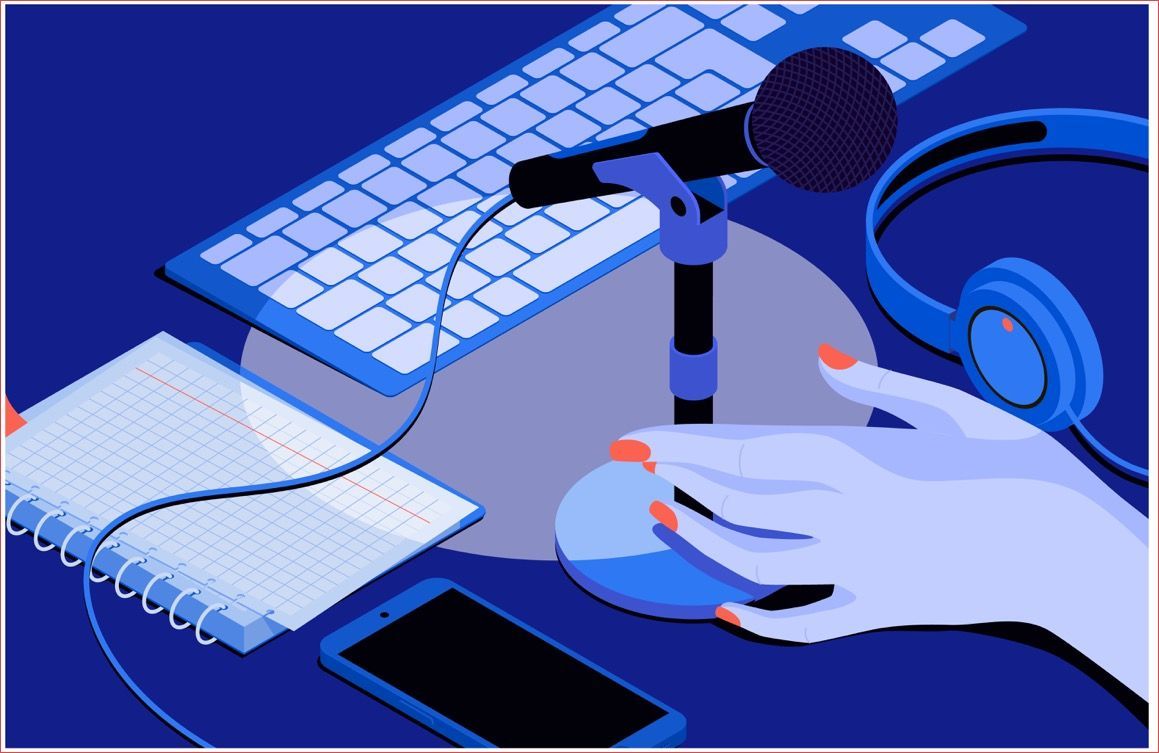
If you track any topic at all on YouTube, you’ll find a broad array of quality of content – from re-posted pre-produced slick network shows to fare that’s most typical of that channel; someone “smithing” together a montage of film clips and still photos using a consumer-level editing program, and then adding the narration track themselves, with whatever audio interface is available to them (typically recording it on their phone.) Personally (despite being a pro voice talent myself) – I have no objection to amateur filmmakers or narrators engaging in a pet project of producing a short on a topic they care about and voicing it themselves. And I turn to these videos a lot: my knitting game has improved because there’s no shortage of homemade how-to videos, guiding you through complex moves which used to involve a trip to the knitting store for one-on-one instruction. The dark science of how to merge Spotify playlists has been quickly hacked with the watching of a YouTube tutorial, and the number of times I’ve turned to amateur YouTube videos while encountering a cooking snag or a recipe clarification – countless. The problem for me – and where I disengage pretty fast from a video – is when it’s voiced by someone who is just *reading* . Reading the words off the page. Trying to say everything correctly – but just going through the mechanical act of getting the written words into spoken form and giving little thought as to the actual content of what’s being said. Without really comprehending what they’re saying, and certainly not conveying their passion or interest in the topic. You’re producing videos on – for example -- urban legends, Hollywood homicide mysteries, extra-terrestrials, or what ever happened to the original Sinclair Dino World sculptures because you’re *interested* in that topic, correct? Then why don’t you sound like it? It’s the mechanical, lifeless, and inflection-free narration on these videos that absolutely kills me. They would be so much more engaging for the audience if you, too, were engaged with the topic. So here’s my checklist for producers of YouTube content to make the most compelling, interesting video you can. Remember Why You’re There. You have a passion and an interest in this topic, otherwise, you wouldn’t have gone to the measures of producing content to educate others on it. Yes, it’s important that your topic is well researched. It’s also important to have everything mapped out and structured to give it some form and flow. And yes, it’s critical to follow a script rather than free—form it. But in my estimation, it’s most important to convey your personal interest and passion . If you’re engaged, we will be too. If you’re not – and you’re merely reading words – we’ll drop off. Comprehend What You’re Reading. It sounds obvious, but it’s essential that you understand the impact of what you’re saying. This is something that even seasoned voiceover talent are guilty of: just reading the words skillfully and on time – but not giving the words the “weight” they deserve. In conversation, we know – on the fly – which words need to be emphasized and “set forward” – either by slowing down before you say the significant word in order to highlight it, slowing down as you say it , or even slightly boosting the volume on that word. Sometimes when we have a script in front of us, we lose the meaning and comprehension of the words. *Really think* about the words you’re saying and give them the appropriate depth they need. Deliberately look for words you can “exploit” – words that are juicy, filled with significance, and which propel your narrative forwards. Don’t Be Afraid to Render an Opinion or be Transparent About Your Views. Out of neutrality and a desire to have your videos garner the biggest audience possible, some users are hesitant to attach an opinion or a viewpoint to their content. To my ear, nothing is more sympathetic or engaging than hearing someone say -- from the heart – how personally moved or attached they are to the topic of the video. Make your perspective known. Don’t be afraid to convey how *you personally * are impacted by the topic. And don’t ever shy away from projecting a strong viewpoint or personality. What will set your videos apart from others in the same genre is if you take the time to remember why you’re covering that material, ensure that you are connecting with and honoring the words, and that you are not afraid or hesitant to convey you own personal connection with the material.

I mentored a voice talent recently who made me feel very grateful for all the other mentees I’ve had who were receptive and appreciative to what I was offering. Despite him seeking me out, I could tell immediately from his attitude on our virtual call that he was actually skeptical, doubtful, and distrusting of what I was saying. Right off the top, his body language conveyed a defensiveness I was not expecting, and despite me trying my best to turn the conversation over to him and disarm him, he still had very rigid walls up. Even more frustrating were his replies to my industry-tried and true suggestions: he would often retort: “Well, that’s no t what I’ve been told.” Any guidance I gave him – whether it was about demo specifications, marketing suggestions, or how to reach out to prospective clients – was met with resistance and debate. Wait – did you not do your research and conclude that I was an industry expert, and someone who has valid strategies as to how to maneuver through this industry – as it’s clear that I’ve been doing just that for almost thirty years? A close friend of mine – a playwright – had a similar experience, where her mentee viewed their appointment as a way for him to show *her* just how much he already knew about how to write and market a script. Again, I ask to no one in particular: you’re asking me for guidance, experience, and wisdom, right? Approaching someone who is already doing what you’d like to do and obtain advice and guidance from them is a smart thing to do. Here’s my advice to anyone who seeks out an industry expert for mentorship, and how to properly and respectfully navigate that relationship: Be Aware of the Power Differential No quality mentor should ever flaunt their expertise over someone who is looking to learn from them; but it should be understood that there is most definitely a power differential between mentor and mentee. Teacher and student. One with knowledge, and one seeking it. A mentor should never use that power difference as an ego boost, but in the same breath, I encourage those seeking mentorship to not try to “show up” or “show off” for a mentor. You’re there to learn from an expert. Be Quiet and Listen Dovetailing with the above idea, it’s crucial for a mentee to listen carefully, make copious notes, and ask for clarification – multiple times – if something doesn’t make sense or needs a bit of detailing. Resist that instinct to chime in, contribute equally to the conversation, or look for ways to show the mentor how clever you are. Again: you have paid for their time. You’re in the position to receive. Use it wisely. Do Your Homework You wouldn’t go into a job interview without having first researched the company and find out as much as possible about them. It makes your interest genuine, and your questions pertinent. Find out all you can about your mentor, and make sure that you ask them for further information about their experience that got them there. Their progression will likely not be your progression; regardless – it’s good to have an awareness of their history, chronology, and the steps they took. Show Gratitude Even though you’re paying them, when they agree to mentor you, the mentor finds themselves in a position of having impart the same information one mentee after another, when they could be doing their high-paid work. In addition to payment, a feeling of gratitude concluding the meeting is an absolute must; a follow-up e-mail thanking them is above and beyond. I always like hearing updates about my mentee’s progress and I enjoy addressing any follow-up questions. Make sure – if you’ve booked an appointment with someone from whom you’d like to learn -- that you come prepared, that you are respectful of their time, and that you must ultimately trust in the advice they’re giving you. It can be an on-going relationship where the mentor tracks your progress and continues to give you guidance, which will ultimately be rewarding for both parties.

I have this phobia of sleeping through my alarm, especially when I’m on business travel and I have something high-profile to do – like give a presentation – for which I want to be up early, well rested and hopefully looking impeccable. In addition to setting the alarm on my phone, I always use the hotel’s wakeup call service. Imagine my confusion when the phone rang in my hotel room in Dallas bright and early, and the voice on the phone was me. Waking me up. Either I had custom voiced the system for that particular hotel chain and forgot about it, or they had simply used open-source prompts. Either way, it was unmistakable: I was being awakened by *me*. Another similar incident – which required a little bit of an out-of-body paradigm for me – was when I was placing an order for flowers as a thank you to a client. I called the automated ordering platform and got…..you guessed it…ME on the system. “Where would you like to send your flowers to?” automated Allison chirped cheerfully. I replied: “Illinois.” To which my automated self said – confidently, after a loaded pause – “OK. I think you said: MONTANA. Is that correct?” How could “automated me” not understand “actual me”? I voiced those prompts. With my own voice. The system should have no problem understanding that input, because I *AM* that input. Voiceover has always been a unique and niche way to make a living. As I started to establish myself in the specific lane of voicing IVR prompts, it’s been pointed out to me numerous times and by a great many people, that my prompts will long outlive me on telephone systems globally. With a lot of my early work being in Open Source, it was inevitable (and part of the business plan) that my prompts are re-distributed freely, to be used wherever they need to be. Generic, with the option to customize. That, inevitably, led to (and still leads to) me stumbling upon my voice when I least expect it. Probably one of my least favorite moments has been when I had to gear up my courage to call a company that was way overdue in paying their invoice (a very rare occurrence, largely because all but grandfathered clients pre-pay), and when I heard my voice – on the very prompts I voiced on that invoice in question – playing beautifully, successfully on their system – it made me angry. They’re good enough to play; they’re somehow not good enough to pay for? Another time, someone at a conference said to me: “It must be Hell to break up with you.” Well, sure. Wait – what? He went on to explain that after a breakup, there are always many painful reminders of that ex – a song you both liked, a movie you saw together – imagine being unable to escape your ex’s voice no matter where you called? Fair enough. One last incident which really brings home the idea that I could (and can) turn up anywhere is when my husband downloaded a workout coach on his phone to keep him motivated at the gym. He came home after using it the first time with a look on his face as though I’d done something wrong. “What’s up”? I asked. “GUESS who’s the voice of the workout coach?” Yep. Me. He changed it to the Australian Male Option, because he already gets enough of me at home. I’m currently looking for a solution which will continue this trend of me popping up everywhere into perpetuity: the dream is to take all of my existing sounds and build my own AI utility, where my sounds can be accessed in a turnkey way long after I’m gone – sort of a “if you can’t beat them join them” response to AI utilities quashing voiceover work. I like the idea of making use of this extensive corpus of sounds I’ve made, which – as a client pointed out – are playing on a phone system somewhere in world at any given moment and will long outlive me.
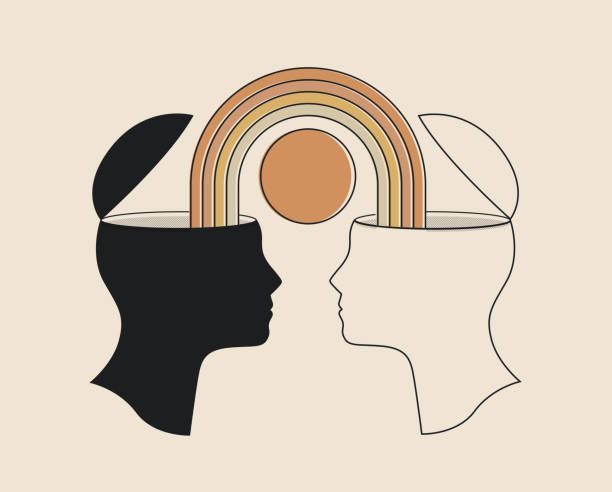
Implementing IVRs for specific industries is a task of finesse. For most applications, a generic, professional tone is appropriate and perfectly suitable. In fact, the more nondescript and “under the radar” IVR prompts can be the better, in most cases – it’s there to do the job of sorting callers into specific “streams” of help, to best utilize the staff’s expertise, *and* to not waste the customer’s time. I’m constantly on a mission to persuade clients to think about the *tone* and the *gravity* of their IVR – especially if their industry has a caller base or a mandate with an emotional component to it – think of serious medical procedures, or any industry dealing with death or protracted illness. It’s important to meet your callers where they are emotionally. I was impressed with the tone of the IVR of a funeral home I called a few years ago when I was appointed to handle a family member’s funeral; not sappy or moribund. Just calm, respectful, and genuine in their understanding of the situation you’re in. It required a genuineness and a sensitivity, and I have to say that the funeral home captured that aspect most successfully in their IVR. Even an autobody shop whose IVR I voiced years ago, addressed the idea that anyone who is calling in is likely not having a great day. Nobody calls an autobody shop when things are going great with their car. They’re in a special type of “crisis”, and the attitude of the script (and therefore my job as the voice talent) was to meet that crisis head on and be empathetic about people having damage to their cars. People contemplating the expense of having to correct that mishap. The inconvenience of being carless – or driving a less-than-desirable loaner. All of this required some empathy on the part of their automated prompts, and they did it successfully. If you’re designing an IVR for an industry that has an obvious and predictable mindset for the caller, what steps should be taken to make sure that the IVR isn’t just directing the call – it’s meeting the caller’s needs and showing a huge capability for empathy. Determine Who’s Calling and What They’re Likely Feeling If you are designing or writing an IVR for a police department, for example, it bears some thought as to what the level of urgency is. For a first-level 911 IVR (and yes, many police departments will have a brief IVR urging non-emergency callers to hop off and dial the non-emergency line, among other crucial redirection) – the empathy comes in with a script and an announcer who is serious, rapid in their speaking speed, and an assurance that they have called the right place for immediate help. For a non-emergency line, the transverse is true: a request that very urgent matters use the 911 number, and that all others should wait briefly while their call is dispatched. Urging callers to speak slowly, clearly, and as calmly as possible can be a good direction and exhibits the empathy that lets callers know that their level of urgency is understood and expected but that they have a role in improving the outcome by taking those simple steps. Above All: Be Genuine Empathy needs to be done right. In the funeral home example that I gave above, if they had taken on an overly sweet, sappy tone, it would have been over for me. Anything even vaguely inauthentic or “put on” will alienate the caller. Write the script to be as genuinely empathetic as possible, and it’s crucial that your voice talent does not take the empathy to an area of sounding fake or constructed. This Too Shall Pass – and We Can Help The caller has a problem – and you have a solution. What works for salespeople (identifying the need and meeting the need) works for IVRs as well. When someone is calling into a radiology clinic to book an appointment, we already know that their doctor suspects something that requires a closer look. If the phone prompts and messaging addresses each caller with a sensitivity that says: “We understand that you want to get in as soon as possible and get the answers you and your doctor are looking for”, this tells the caller that they’ve called the right place. They’re in the right hands. That the company understands the gravity of the situation. And that they’re not taking this lightly. Showing empathy in your IVR is a smart thing to do – and when done with skill, shows the caller that you’re in tune with their needs and that you have the solution they’re calling in for.

When I suggest to clients that they can write things into their IVR that can pique the interest of callers – and even make them feel as though they’re getting ahead just by being callers – it’s met with not a little bit of skepticism. An IVR is meant to sort callers into “departments”, so that they can get specialized help with their issue. So that the staff’s time isn’t wasted by being sidetracked on an issue they don’t typically deal with. An IVR can actually be a selling tool? It can and *should*. There are a lot of issues that people call in with that can’t be resolved online. Specific questions that aren’t in the purview of the FAQs. And the IVR can be a way of giving specialized care to those who have either exhausted all self-serve options or choose to interact more directly with the company via the live agent experience. The IVR – and subsequent live agent transactions – should be seen as a golden opportunity to reinforce the relationship between the caller and company – and to offer them some extra perks for calling in. What do those look like? Discounts for Calling A live agent once cancelled my online order in progress and re-rang it through with a hefty discount – as a thank you for calling in. Despite my well-known phone phobia, I was a fan of making a call from that point onwards. Live agents can give callers what an online ordering framework can’t – the discretion to make adjustments to the order (move up the delivery date, offer a discount on the spot) and use their interpersonal skills to gain the customer’s trust and reinforce that relationship. “Easter Egg” codes Want to reward them before the live agent interaction even happens? If the callers waiting in an on-hold queue is inevitable, make sure it’s worth their time. In addition to an on-hold system educating the callers about the features of the company and reinforcing their good judgment in selecting you to transact with, an on-hold system can be interspersed with “Easter Eggs” – discounts or offers only available by listening to the on-hold system. I voiced a system recently where a 10% discount code was given at the 2-minute mark on hold; when they got to about the 4-minute mark, I said: “Forget that 10% off code. We so appreciate you staying with us on hold that we’re going to give you 15% off. Tell the agent “2415GOAT” when they answer you call.” Shortcuts for Future Calls Another way to entice callers to be repeat customers is to offer them shortcut “hacks” for when they call in the next time – one follow-up survey I voiced offered – as a reward to doing the survey – a suggestion to press a specific option right out of the gate, the next time they call, that will expedite their passage to a live agent. This plants the idea with the caller that there *will* be future interactions – and that they have some agency and control over those future interactions. Genuine Relationship Building As easy and possibly time-saving the online interaction can be, the live agent interaction is a golden opportunity for relationship-building that should not be underestimated. When the live agent is genuine, tuned into the customer, and interested in providing a good experience for the caller, there is untold opportunities for relationship building that an online bot can’t touch. That Elite Feeling Many IVRs catalogue caller’s numbers and remember that they’re a repeat caller. These can be useful metrics for the company to track chronic time-wasting problematic customers, but it can also be used to acknowledge those callers who are calling back, and who may be calling due to any of the incentives mentioned above. It can be a bit of a “red-carpet” feeling when the agent says: “Well, Miss Lewis, I see that you called previously about your printer way back in August 2023. I trust it hasn’t given any problems since then..?” It shows that the customer has some legacy, offers consistency of care, and already has an “in”. Yes, an IVR is a utility to sort callers; I submit that it can be used for so much more and can be a genuine relationship-building tool.
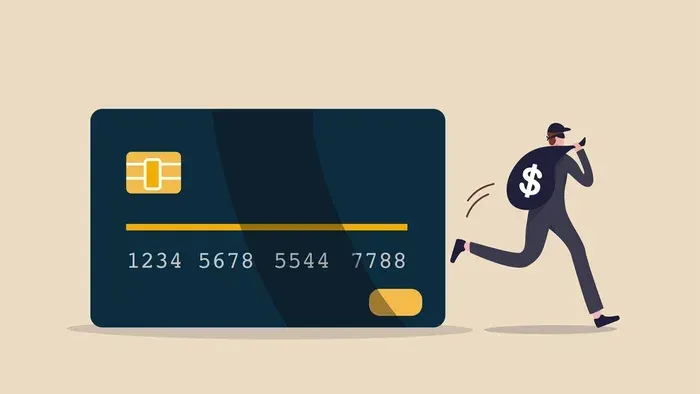
The feeling of panic was inescapable. My bank left a message on my voicemail, letting me know that some odd charges from Europe had been attempted on my credit card. Hyperventilating, I couldn’t read their callback number I scrawled down, and then scrambled to find my reading glasses to read the number on the back of my card. Breathe, I reminded myself. It will all turn out fine. I got on the bank’s IVR. Then the *real* Hell began. My bank’s “Virtual Assistant” answered the call -- an overly perky thirty-something man who sounds just so willing and capable of helping me. He even promises a shortcut to a solution: “In a few words, tell me what you’re calling about!” I warble: “Unknown credit card charges.” A Loaded pause. “OK”, he replies, “you’re calling about your credit card. Great. You can say things like: ‘check my balance’ or ‘when is my due date?’ So go ahead and tell me why you’re calling.” ‘UNKNOWN. CREDIT. CARD. CHARGES.” Another pause. “Perfect. I’ll get you to an agent. In the meantime, please say or enter your credit card number.” As rapidly and as clearly as possible – because I’m envisioning a modest yacht being charged to my card while we’re futzing around with formalities – I say the number. Then, he says: “Great. Now tell me the two digit month and two digit year of the expiry date. For example, if the expiry is January, 2026, say ‘oh one two six.” After that was a series of prompts in which he explains that he doesn’t understand my input (he doesn’t know this, but I speak for a living) and I repeat it with ever-increasing anxiety and a boosting of volume. No amount of shrieking “AGENT! AGENT!” was going to get me actual live help until the Virtual Assistant (dubbed by me “Virtual Ass” ever after) deemed me ready for that. By that time, easily fifteen minutes had transpired. Now, how is that system of automation “helping” anyone in a dire situation? I know it was implemented to be a “first line” of service to make sure the caller is sent to the right “specialist”, but is this bot – with no sense of urgency, no feeling of empathy, and with a determination to put me though all sorts of preliminary steps – which take up critical time – really, actually a good idea when someone is fearful of thieves charging up a fortune? In a short answer: no. In every industry where there is critical failure: network-critical technical support, mental health crisis lines, emergency evacuation prompts – and yes, even a credit card compromise – it is crucial that an outward-facing IVR is fast, urgent, and sincere in their understanding of the situation. The minute the caller feels at odds with the phone system – as though it’s a time-wasting obstacle working against them rather than a help – it’s a useless feature that needs to be re-evaluated and modified to be truly responsive in a crisis – whatever that crisis may be. Of course, I’m going to advise that your IVR is as fast as possible. I’m always an advocate for speed in an IVR – a slow, meandering system of prompts is barely tolerable when placing a florist order – and excruciating when encountering it during a desperate time. Get the caller though the IVR as absolutely quickly as possible. No time for formalities like “please listen to all of our options before making a selection”. Make it concise, economical, urgent, and brief . Show the caller that you’re taking this situation as seriously as they are. Next, Triage your prompts. Make sure that the most urgent, the most frequently used, and most important prompts are front stacked at the top of the call flow. Start the messaging by acknowledging why the caller is there (in the case of my credit card breach, a dedicated IVR which says something to the effect of: “You have reached the cardholder fraud department. Please listen to the following three choices before transferring to immediate live help….” ) and order those top three choices by the most likely choices first, or the most urgent. I’m going to implore you to not waste time by verifying account numbers, pins or identities at this point. I have found that these necessary steps can be better handled by the live agent. It became the trend to get some preliminary information before the live call takes place; all you need to do is to get yourself into the IVR of a large entity, where they want to get the initial information gathering out of the way, that you realize that the agent will likely ask you the very same information. It’s not timesaving or even in the interest of security to ask for it ahead of time – in fact, the opposite is true. When building an IVR for a critical/emergency feature, make sure that the IVR understands the severity of the issue, promises not to waste the caller’s time, vows to render a solution sooner than later, and beyond everything else, the messaging needs to be on the caller’s side, and committed to making them “whole” again.
